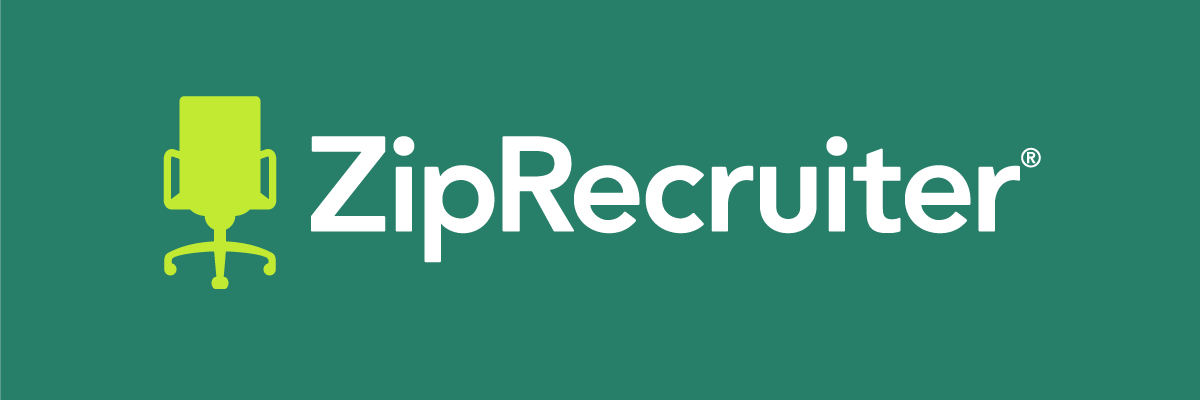
Guest Column
Why Wellness Matters in the Workplace

Author
Qasim Saifee
Chief Operating Officer at ZipRecruiter
Published
July 6, 2022
It’s no secret that employees expect more from their employers than they did a few years ago--from culture and community, to support for their professional, emotional, and physical growth.
Qasim Saifee, COO of ZipRecruiter (NYSE: ZIP) spoke with members of NYSE’s listed community and industry experts about how they are addressing personal and professional wellness in the workplace. As major employers and service providers – some are both – these companies and their leadership are focused on the critical importance of workplace wellness for both employees and corporations. Here is what he learned from them.
ZipRecruiter works with hundreds of thousands of businesses, from SMBs to corporate enterprises, and has a unique purview into how employers are managing these shifts and the growing emphasis being placed on employee health and wellbeing.
In a recent presentation on managing talent in a post-covid world, ZipRecruiter Chief Economist Julia Pollak explained that demand for workers remains strong, with job postings on ZipRecruiter up almost 85% since before the pandemic. Workers are leveraging the tight job market by trading up to new jobs in record numbers, though what defines “up” is a moving target.
While important, salary and title aren’t always the deciding factors. Remote and hybrid work policies, benefits and perks, even unique on-site amenities like sleep pods, game rooms and baristas can all be part of the work/life balance equation that attracts and/or retains talent.
Over the past two years, ZipRecruiter has found that job seekers have increasingly made personal and professional wellness a priority in their job search process, and companies are responding. Thought-leaders from across industries expect this trend will be a primary focus of companies moving forward.
According to Lululemon’s 2022 Global Wellbeing Report, almost half of employees are looking for more flexibility in working hours and location, followed closely by increased health support, particularly among Gen Z workers and parents. And they want this going forward, extending beyond pandemic-related needs.
Companies of differing sizes and widely varying industries are recognizing and defining wellness across a variety of employee requests.
Shining a Spotlight on Wellness
Sandra Lamartine, the SVP & Chief Human Resources Officer at The AZEK Company (NYSE: AZEK) which manufactures sustainable outdoor living products, said that in the past, their focus was on medical wellness, primarily encouraging preventative care. However, with the Covid pandemic, their “approach to wellness broadened significantly to include physical, mental, and financial well-being.”
Lamartine acknowledged that, “Employee needs were likely there before, but Covid and the ensuing challenges brought this into sharper focus. We look at wellness from an organizational level in order to broaden offerings and support and promote inclusion.”
“Employee wellness is now more nuanced, and each employee may have different wellness needs depending on their individual circumstances,” said Sarah Luna, President of Xponential Fitness (NYSE: XPOF), whose boutique brands include Club Pilates, Pure Barre and StretchLab. “Our visitation rates in North America increased by 45% year-over-year in Q1 of 2022.”
She added that a member survey found that 80% of new members joined to improve their physical and mental health, demonstrating that this heightened awareness to prioritize health and wellness is real. “Our unique XPASS subscription allows organizations to offer their employees a corporate wellness program by providing access to our community-focused boutique fitness classes at 2,100+ locations nationwide. The XPASS provides subscribers with classes across 10 different health and wellness concepts, from boxing to yoga, to stretching, and dancing. All of our U.S. studio locations are available under a single monthly subscription as well as digitally through XPLUS, our digital platform offering premium at-home experiences,” Luna added.
Sara Marzitelli, Group Vice President of People at Kindbody, a leading fertility and family-building benefits provider for employers offering comprehensive virtual and in-person care, expressed that with employees who work across their clinics, headquarters, and at home, the needs of their employee populations can differ and have slightly shifted over the last two years. “We think of wellness in a number of ways, including physical, emotional and financial wellness, and support several initiatives that fall within each bucket.”
Robin Glass, the President of Included Health, which provides access to integrated virtual and in-person urgent, primary and behavioral health care, said the past two years have been unique for her company as it navigated a merger that accompanied a shift to a largely virtual-first setting. “We had to take a hard look at what wellness and well-being meant for our team. Many of our core health and well-being needs – and those of our clients – only grew in importance: the ability to access high-quality care, culturally affirming providers and a trusted resource that can take the stress out of healthcare.”
James Startare, VP of Benefits for Aramark (NYSE: ARMK), the food service, facilities and uniform services provider, said that “wellness comes in many forms and means different things to different people. We acknowledge and understand this and view wellness as part of our hospitality culture.”
Mental Health at Work
Marzitelli expressed that in recent years, there has been more of a need for mental health initiatives to provide ways to decompress and support a healthy at-home environment.
Lyra Health, a leading provider of innovative mental health solutions for employers, recently announced Workforce Transformation, a suite of offerings designed specifically to help organizations proactively build a culture of mental wellness and foster psychological safety.
“For far too long, organizational mental health support has focused on workplace perks and short-term fixes,” said Dr. Joe Grasso, Lyra Health’s senior director of workforce transformation. “By introducing organizational solutions that identify areas of need, upskill managers, reduce stigma, and empower employees to prioritize their wellness over the long term, company leadership can create a culture of mental well-being and make a significant and lasting impact on their people and organizations.”
“We recognize the undeniable impact of inclusion and ‘belongingness’ to mental health and have worked to develop clear strategies that make each individual feel valued and empowered to bring their full selves to work,” added Lamartine.
Startare believes listening is key. “Team members are now more open about sharing their feelings and wanting to be heard, and mostly we see an ongoing and strong desire for everyone to feel a sense of belonging,” he said. “Team engagement in a variety of activities and our Employee Resource Group (ERG) sessions are more popular than ever, even when conducted virtually.”
Many of the NYSE community thought-leaders interviewed said they are addressing the need to reduce stress through offerings of counseling, meditation, yoga and more varied physical fitness options to meet the needs of employees.
Wellness at Home
Another area of focus, as several noted, is helping to minimize financial stress through education about money management and concepts such as same-day pay benefits where appropriate. They also recognized that stressors can originate at home.
Haleigh Tebben, Chief Commercial Officer for Brightline, a virtual behavioral and mental health solution built to care for kids and teens, identifies another area of focus: the family. “Employee wellness is crucial to the success of every company,” she said. “But in corporate America, there is an often underrecognized link between the well-being of working parents and the mental health of their families. Nearly 80% of working parents spend time each day managing their kids’ behavioral health, and most feel they lack support from their employer to help with their children’s needs.”
Brightline found that 75% of working parents would choose a mental health benefit for their kids over themselves.
Sometimes, it is the providers themselves who need care. “Our mission is to provide compassionate care, which cannot be done if our team members are not taken care of,” said Robin McIntosh, co-founder & co-CEO of Workit Health, the nation’s leading virtual substance use disorder treatment provider. “Burnout, stress and anxiety are so common in the healthcare industry, and we strive to make sure our team has the adequate resources to manage and cope with these feelings.”
Healthier Eating
The holistic approach being taken to employee well-being also extends to things like healthier eating. Sweetgreen (NYSE: SG) has been at the forefront of the trend towards eating healthier for more than a decade with its 160+ plant-forward restaurants. To create a nutritional solution for time-crunched corporate employees who were looking to eat better, sweetgreen launched a program for employers called Outpost, which offers made-to-order efficient and free daily batch delivery to the office.
Haley Sedam, Director of B2B Accounts, said sweetgreen recognized “an increased demand in employees looking for healthier options, especially as they are starting to return to work. Our Outpost program is focused on making sure employees (not just ours, but our partners as well) can eat well, no matter if they are working from the office, from home or a hybrid of the two, and has been an integral part of our partners’ health and wellness initiatives.”
Healthy Employees Staying Power
Startare echoed what many of our other NYSE community thought-leaders have shared. “Our people make the difference, and as we embody our hospitality culture, we have to understand that healthy, happy employees are more likely to stay at Aramark and encourage others to join them here. It is our responsibility to put the well-being of our employees as one of our top priorities.”
Greater emphasis on health and wellness benefits and programs should be part of every company’s recruiting strategy. To find out how ZipRecruiter helps enterprises recruit talent through data driven strategies and customized solutions, visit ziprecruiter.com/enterprise.
